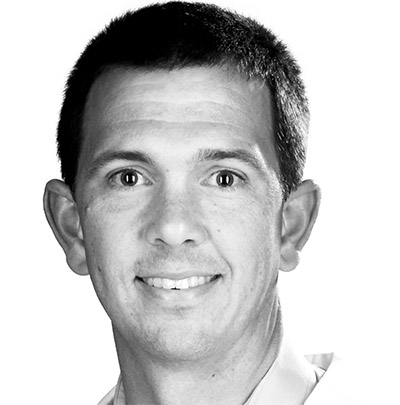Andy Watt
Executive Director, Antisense Lead Identification Ionis Pharmaceuticals

Scientists at Ionis Pharmaceuticals have spent more than 27 years developing RNA-targeting medicines called antisense therapeutics, making the company a leader in the discovery and development of this exciting new class of drugs. With two drugs approved and more than three dozen drugs in various stages of development, Ionis aims to tackle unmet needs in a wide range of indications, including neurological and neuromuscular disease, metabolic and cardiovascular diseases, and cancer.
Naturally, lead identification is a critical part of that equation. Overseen by executive director Andy Watt, the lead identification group screens thousands of compounds designed against hundreds of molecular targets every year. The rise of genomics has been a real boon to the company along the way. “The explosion of genetic knowledge has been directly applicable to our technology because our drugs are developed based on genomic information. In fact, our drug technology is one of the fast ways to get from gene to drug,” he says.
The company’s unique technology platform means that it can go after virtually any indication. “One advantage is that our primary target is RNA, which provides us with the opportunity to pursue multiple targets across broad therapeutic areas,” Watt says. “Because our technology targets RNA, it can address a large number of disease targets that have been unapproachable with conventional drug technologies.”
This work has attracted interest from major pharmaceutical companies, many of whom have partnered with Ionis to get a foothold in the antisense market. That makes lead identification especially important and gives Watt’s team added motivation to make their pipeline as efficient and effective as possible.
Daniels and her team keep their lab at the cutting edge by frequently evaluating new technologies. “We look to see where the next bottlenecks are going to be in our processes as sample volume increases, and resolve these before they hit the lab,” she says. “When we identify areas in the processing where those bottlenecks are going to occur, we’ll focus in on that particular piece of the process and proactively look to see what new solutions are out there.”
Andy Watt|Executive Director, Antisense Lead Identification, Ionis Pharmaceuticals
Since the drugs they test are all antisense oligonucleotides, with each oligonucleotide designed to specifically target a single RNA, the team uses RNA as its primary endpoint for evaluating function. They run RT- qPCR assays to measure the levels of different target RNAs. “In most cases, the compounds are intended to cause a reduction in RNA levels,” Watt says. The setup of these assays often involved complex patterns of transferring reagents or samples from one plate to another. The team was performing the entire process by hand, and he needed a solution to fill the automation gap.
When Labcyte released the Echo 525 Liquid Handler, Watt jumped at the opportunity to try it out. The instrument could easily handle the full range of volumes needed — from just a few nanoliters to several microliters in a single reaction — and Watt knew the company had a strong reputation. “The attractiveness of the instrument was its extreme exibility,” he says. “You can transfer from any well to any well in any combination extremely fast and also with extremely low volumes. And it doesn’t use any consumables.”
Today, Watt’s team uses the Echo platform to set up and run the qRT- PCR reactions on many different samples in the same plate. “For this application, there really wasn’t another option that made sense,” he says. The instrument has made it possible to shrink volumes, so the team saves money on reagents and gets more mileage out of each sample. “We have limited volumes of samples, so by consuming less of them we can measure many more endpoints from the same sample,” Watt notes. Echo liquid handlers are tipless, so Ionis saves money on consumables and reduces waste as well.
Watt particularly likes the reproducibility aspect of the Echo platform. In addition to reducing the variability characteristic of pipetting performed manually, the instrument also creates an audit trail detailing which sample went to each well. “With humans doing it, you can easily go to the wrong set of locations and transfer samples to the wrong place. The Echo just doesn’t do that,” he adds.
With the Echo Liquid Handler producing qRT-PCR reactions, Watt’s team has more time to focus on other tasks — and they can stop worrying about the ergonomic effects of all that pipetting. “It’s not something you can ignore,” he says. “Once you get to a certain level of productivity you have to think about automating things so you’re not wearing out people’s shoulders and arms.”